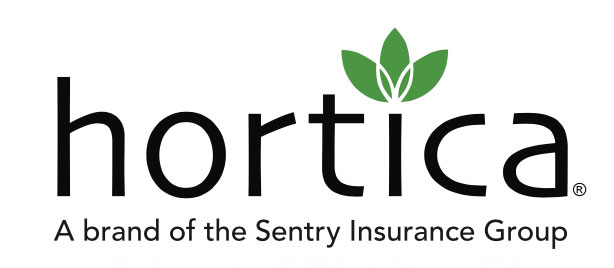Trends and Hot Sellers in Perennials for Pollinators

Hibiscus is quickly becoming a top pick for pollinator perennials at Proven Winners. Photo: Proven Winners
Pollinators and awareness of their habitat loss are on many consumers’ minds. As Dr. Allan Armitage identified in a recent Greenhouse Grower column, “What the pollinator trend has created is a wonderful marketing opportunity.” But what are consumers looking for? How can you best capture the market?
Consumers are changing in the post-pandemic era. The demographic is expanding, and younger buyers are becoming a dominant face of the market. First-time home buyers are branching out from the houseplants and veggie gardens of the pandemic.
“More than 80% of consumers are doing research before they come in the door,” says Jessica DeGraaf, Director of Retail Accounts at Proven Winners.
She explains that they know they want to help the pollinators, desire to have an impact, and feel they are helping the greater environment. Nikki Bruner, Marketing Manager at the Florida-based operation Perfect Plants Nursery, shares the same view.
“Overall, the biggest trend is getting pollinators to your yard,” she says. “People want to get the pollinators back.”
Selling a solution to a problem is a time-tested method, and it can work with perennial sales, too. DeGraaf explains the mannequin concept of gardening, which is akin to when a clothing shopper walks in and likes the outfit on the mannequin and says, “I want that look.” Display areas and recipes that combine perennial plants into a solution can be popular and are a way to boost sales. As an example, Proven Winners’ EZ Scape program tailors recipes to specific solutions. Gardens for sun, shade, pollinators, and climate provide customers an easy, hassle-free way to “get the look” and not worry about picking the wrong plants.
Native Plants Are Back
While many annuals and introduced non-native species provide pollinator habitat, recent trends have shown a significantly increased interest in native plants and plants with native roots, especially in the last few years, says DeGraaf.
“Native plants are always a plus for us,” adds Bruner.
The 2023 Perennial Plant of the Year, a black-eyed Susan called ‘American Gold Rush’, has several Rudbeckia species as parents. Of course, what is native to one region can be an invasive species in another.
“Customers are coming in and looking for natives more and more,” says Kelly Larsen, Greenhouse Manager at Winter Greenhouse in Winter, WI. “Customers are wanting to do their part,” she says, and may be looking for strictly native species or native cultivars. Explaining that native cultivars may perform better for them is part of educating the customer and helping them to succeed based on their goals.
Growers and retailers can establish themselves as a solution source, providing education, in-person events, and inspiration, says DeGraaf. Become the trusted source in your community, she urges. Customizing your display to show and talk about native perennial flowers and shrubs can be a huge draw and establish your bona fides as an expert source.
What’s Hot Right Now?
Purple and pink are the hot colors, says Bruner, and heat/drought tolerant selections have been popular this year due to the heat wave gripping much of the country. She also finds that perennials with fragrant blooms are good sellers.
Hewitt’s Garden Centers operates seven locations in the Albany area of upstate New York. When I asked about the most popular seller for pollinator perennials, the answer was immediate.
“Coneflowers,” says Patti Marx, Manager at the Scotia location. “I can’t keep them on the shelf, especially red ones.”
Rudbeckia is another hot seller, says Marx. “People are filling their yards with them. I have people buying 8 to 12 at a time.”
Larsen from Winter Greenhouse agrees, telling us coneflowers in deeper reds and purples are selling well, and adds that bee balm is always a popular choice for their customers as well.
Hibiscus
“You’ve got to talk about hibiscus,” says DeGraaf, “It’s the fastest-growing perennial category for us.”
While hibiscus may seem like a traditional selection, new offerings are constantly being developed, like the Summerific line from Proven Winners, which even has its own hashtag, #summerificweek. Bruner says that Perfect Plants Nursery has sold out of hibiscus this season and will be expanding for next year.
“The key to hibiscus,” explains DeGraaf, “is helping the customer understand that it doesn’t look like much in spring when they’re shopping, but it will be amazing in August.”
Butterfly Bush
The allure to pollinators is right in the name for butterfly bush.
“‘Black Knight’ butterfly bush has been a huge seller this year,” says Bruner.
Featured in garden publications and sporting large, deep purple blooms from summer into fall, it’s an easy pick for consumers.
Caryopteris
Another popular pollinator perennial has been Caryopteris, deer-resistant, heat- and drought-tolerant shrubs. Also known as Bluebeard or Blue Mist Spirea, they are shorter in stature and can be a perfect fit for customers with smaller spaces to fill. Depending on local gardener frustration levels, selling deer-resistant solutions can be lucrative.
Alliums
When selling to customers with deer and rabbit problems, alliums may be just the solution, and pollinators love them. Farmers Market Garden Center (FMGC) in Chicago says alliums have been a great seller this year. Their tolerance of less-than-perfect soil and minimal maintenance needs are big selling points.
Dianthus
“Dianthus have really come on strong of late,” says DeGraaf.
New perennial varieties are heat tolerant and suitable for containers, providing another solution for customers who want pollinator-friendly perennials but don’t have much space. A table with educational materials and pollinator plants in pots can be an easy cart filler.
Sedums
My sedums are currently a pollinator hotspot, reeling in four bee species at a time. DeGraaf says sedums provide that late-season interest in a landscape and have been a popular choice. FMGC agreed that sedums are in demand this year as well. Excellent cold hardiness can be an important selling point for northern gardeners.








